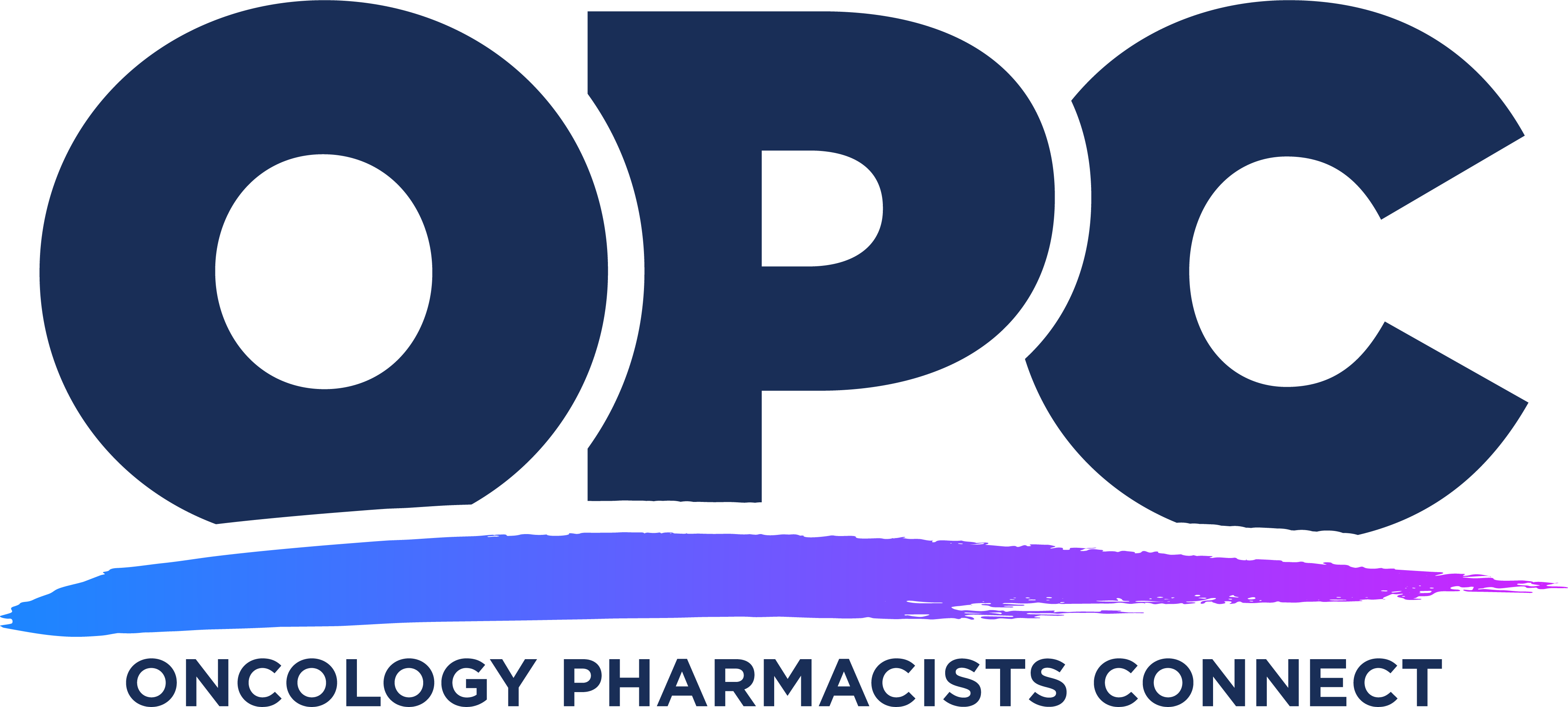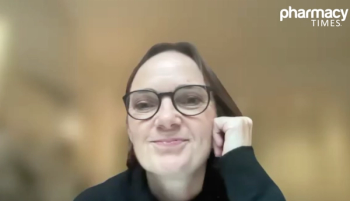
OPC 2025: Advancing Precision Oncology Through Pharmacy-Led Innovation

Key Takeaways
- Precision oncology has transitioned from chemotherapy to genomics-driven, personalized treatments, yet pharmacists' roles remain underutilized due to training and support barriers.
- Key testing strategies in precision oncology include somatic, germline, and pharmacogenomic assessments, with next-generation sequencing being pivotal.
At the 2025 Oncology Pharmacists Connect (OPC) meeting, Mya Tran, PharmD, BCOP, highlights the clinical promise, operational challenges, and evolving role of pharmacists in implementing precision medicine and genomics-driven cancer care.
Precision oncology has transformed dramatically over the past 20 years, evolving from an era dominated by empiric cytotoxic chemotherapy to one increasingly defined by tumor genomics, targeted therapies, and personalized treatment paradigms. In a presentation at the 2025 Oncology Pharmacists Connect (OPC) meeting in Austin, Texas, Mya Tran, PharmD, BCOP, described both the promise and the challenges of integrating precision medicine into everyday pharmacy practice.
Tran noted that her boss, with 25 years of experience in oncology pharmacy, has long complained that the current generation of oncology pharmacists are spoiled with options for cancer treatment.
“He always complained to me that my generation is too spoiled, because we have too many great things that we use today. Back in the day, [he said] all they had was carboplatin and paclitaxel, and now I'm complaining about how KRAF-targeted therapy is not good enough. Well, I told him, it's good to be spoiled,” Tran, a precision oncology clinical pharmacist at the Precision Genomics Program at Indiana University (IU) Health Simon Cancer Center in Indianapolis, Indiana, said during the OPC meeting. “You can help patients with all these great therapies now. I need to be more spoiled, so we can have more good therapies.”
Tran explained further that historically, cancer was seen as being homogenous. Today, there is a more nuanced understanding of cancer as a molecularly heterogeneous disease.
“Back then, the cancer type dictated specific therapies. Now we see more and more molecular markers driving therapy selection. Back in [my boss’s] time, having a small molecular panel for certain tumors was probably good enough. Now we want to go big and go broad on many different types of solid tumors,” Tran said. “Back then they complained about how cancer therapy was expensive. Now it's even more expensive.”
The Expanding Role of Pharmacists in Precision Medicine
Despite the rapid pace of innovation, the pharmacist’s role in precision medicine remains underutilized, according to Tran. A survey conducted by Pharmacy Times Continuing Education and presented at the 2025 Hematology/Oncology Pharmacy Association Annual Meeting found that up to 70% of pharmacists were unaware of institutional precision medicine initiatives. Barriers cited by respondents included lack of training, insufficient institutional support, time constraints, and unfamiliarity with genomic technologies.
Tran, who is embedded in a thoracic oncology clinic at IU Health, underscored the overwhelming complexity of precision medicine today, with constantly evolving molecular data.
“I know that many of you are probably considered the unicorn in your practice. All people come to you for everything, so you already have a lot on your plate,” Tran said. “It's really hard to take that additional responsibility to learn a new skill set, like interpret genomic data and know how to apply that in practice—it's really tough.”
Key Components of Precision Oncology Testing
According to Tran, precision oncology relies on 3 major testing strategies: somatic (tumor) testing, germline testing, and pharmacogenomic assessments. For most patients with advanced or metastatic solid tumors, the 2022 American Society of Clinical Oncology guidelines recommend upfront comprehensive somatic genomic testing using multigene panel assays that include at least 50 genes. These broad panels enable the detection of rare and emerging biomarkers—such as high tumor mutational burden (TMB ≥10 mutations/megabase), EGFR exon 20 insertions, or gene fusions involving ALK, ROS1, or NTRK—that can guide therapy selection or clinical trial enrollment.
To accomplish this, several technologies are utilized:
- Next-generation sequencing (NGS): Detects mutations, amplifications, deletions, and gene fusions at the DNA and RNA levels.
- Fluorescence in situ hybridization: Useful for gene amplifications but limited in scope.
- Polymerase chain reaction: Fast but narrow, typically targeting only a handful of mutations.
- Immunohistochemistry: Detects protein overexpression (eg, HER2, PD-L1, Claudin 18.2).
The speaker emphasized that while NGS is invaluable, it must be used thoughtfully, and not all NGS panels are created equal. Assay design, depth of sequencing, RNA inclusion, and bioinformatics influence the quality and clinical actionability of results.
Case Study
To underscore the real-world impact of these treatment decisions, Tran shared a case of a male patient aged 45 years with newly diagnosed metastatic non–small cell lung cancer. Despite undergoing NGS testing at an outside hospital, his results returned negative. He was started on immunotherapy plus chemotherapy, but his disease progressed rapidly.
“It’s a very sad story,” Tran said. “He actually got diagnosed at the same time his third child was born in the hospital. He developed back pain during the hospital stay when he was waiting for his wife to deliver the baby, and he thought, maybe it's the chair that's bad. It turns out it was not… it was adenocarcinoma of the lungs.”
Eventually, a liquid biopsy conducted at IU revealed a rare EGFR-RAD51 fusion at 0.4% variant allele frequency—a finding so uncommon that its clinical relevance was debated. Given limited options, the team initiated osimertinib (Tagrisso; AstraZeneca), an EGFR tyrosine kinase inhibitor, off-label. The patient responded dramatically, regaining mobility and returning to full-time work and parenting.
“By June 25 of 2022, he was doing great,” Tran said. “His baby boy's almost 3 years old now. He is back to running and working full time. So, we can do things that really change a patient and a family’s life.”
Operational and Technical Barriers
Despite the growing enthusiasm for precision medicine, its implementation is often hindered by several significant operational and technical barriers, Tran explained. One major issue is tissue limitation. Core needle biopsies, which are now standard in many cancers, often provide only small amounts of tissue that may be exhausted by initial diagnostic and PD-L1 testing before NGS can even be attempted. This challenge is especially pronounced in cancers such as prostate and breast, where bone-only samples are common and often degraded during decalcification, limiting their utility for molecular testing, according to Tran.
Turnaround time for NGS results is another area of concern. NGS tests frequently take 2 to 3 weeks, a delay that can force clinicians to initiate treatment before results are available, potentially missing a more effective, biomarker-driven option.
Liquid biopsies offer a less invasive alternative but bring their own challenges, according to Tran. Circulating tumor DNA may be absent in patients with low tumor burden, and even when detected, false positives and assay variability can complicate clinical decision-making. Tran specifically cautioned against using blood-based TMB as a stand-alone biomarker for immunotherapy decisions.
Tran noted that additional barriers include the complexities of informed consent and potential legal risks tied to incidental germline findings, which require thorough patient counseling and careful documentation. Also, financial toxicity remains a real concern. Without comprehensive workflows for prior authorization and patient financial assistance, some individuals may face prohibitively high out-of-pocket costs for genomic testing.
IU’s Precision Genomics Program
To mitigate barriers to implementation, Tran explained that IU built a comprehensive precision genomics program that serves both academic and community oncology clinics. The centralized team includes oncologists, pharmacists, molecular pathologists, variant scientists, and genetic counselors.
Workflow includes:
- Biopsy coordination to ensure tissue adequacy
- NGS testing (DNA + RNA panels)
- Tumor board-based variant interpretation
- Pharmacist-led electronic medical record documentation and patient counseling
- Trial referral and biomarker-based therapeutic access
The pharmacist’s role is especially critical in interpretation, clinical validation, and patient communication, according to Tran. In the IU model, pharmacists function in a similar fashion as antimicrobial stewardship experts—interpreting molecular data and selecting drugs in collaboration with oncologists.
Pharmacists Embedded in Precision Oncology
Tran concluded with a call for pharmacists to become deeply embedded in precision oncology efforts, guiding clinical teams through the maze of genomic data, regulatory landscapes, and therapeutic options. As more patients are identified based on their molecular fingerprint rather than tumor site, pharmacists—already skilled in evaluating drug mechanisms, counseling on off-label uses, and interpreting trial data—are uniquely positioned to lead these efforts, according to Tran.
“As a pharmacist, I think we are built to be a part of precision medicine,” Tran said. “I think this is a very exciting time. My vision in the next couple of years is going to be more pharmacists who participate in different precision medicine initiatives.”
REFERENCE
Tran M. Precision Medicine in Oncology Pharmacy. Presented at: Oncology Pharmacists Connect; Austin, Texas; June 19-20, 2025.
Newsletter
Stay informed on drug updates, treatment guidelines, and pharmacy practice trends—subscribe to Pharmacy Times for weekly clinical insights.






































































































































































































